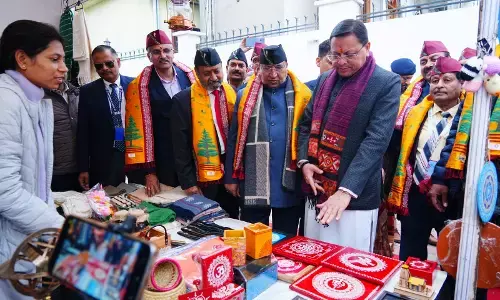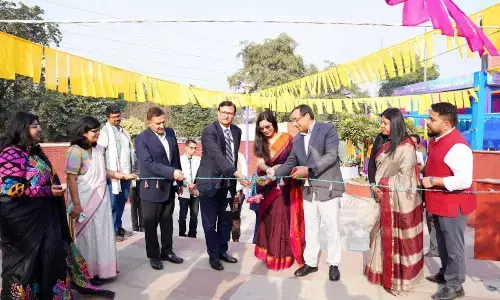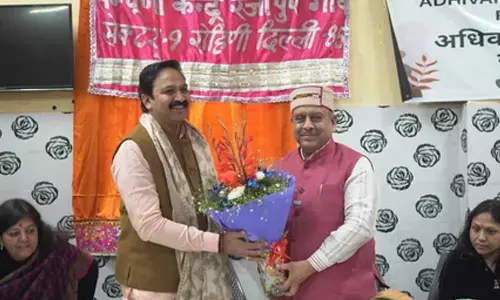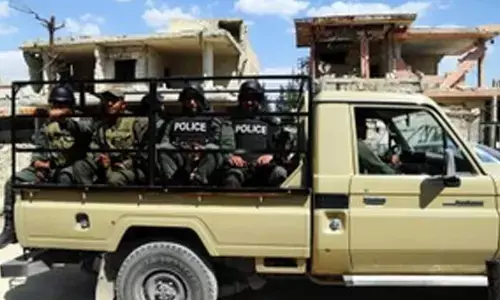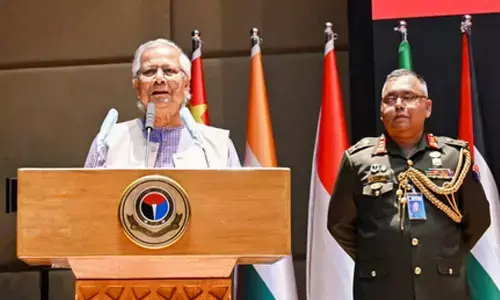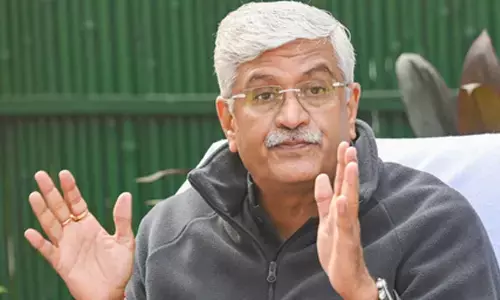GIS mapping issues, rookie operators slow down 'drone revolution' in Rajasthan
Share :
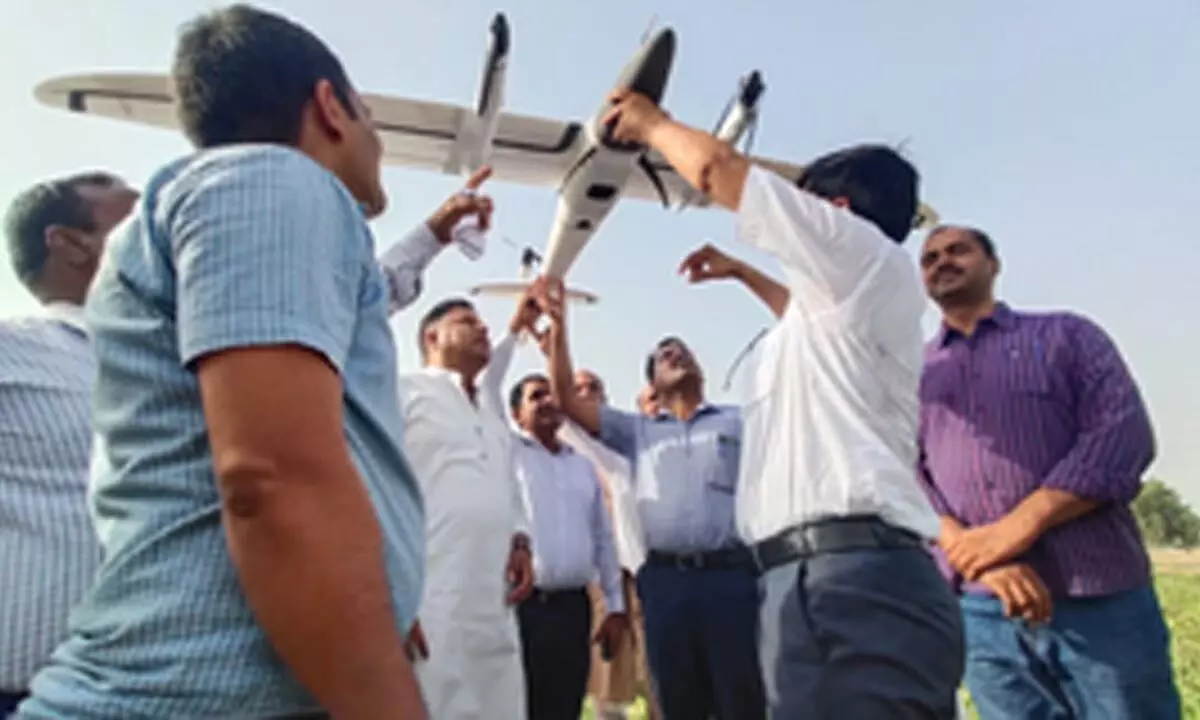
The implementation of the Central scheme SVAMITVA (Survey of Villages Abadi and Mapping with Improvised Technology in Village Areas) has been slow in rural inhabited (abadi) areas of Rajasthan.
Hanumangarh (Rajasthan): The implementation of the Central scheme SVAMITVA (Survey of Villages Abadi and Mapping with Improvised Technology in Village Areas) has been slow in rural inhabited (abadi) areas of Rajasthan. Rural residents who are using populated lands within the panchayat circle on or after September 25, 2018, will be allotted that specific plot, for which they will get ownership rights.
Drone technology is used to map land parcels to provide documents of ownership (pattas in Rajasthan) to the household owners, thereby ensuring proper land records and reducing chances of future disputes. Additionally, Geospatial Information Systems (GIS) maps from the drones will help village panchayats to devise better development plans.
Prime Minister Narendra Modi launched the SVAMITVA scheme on April 24, 2021, after the completion of pilot projects in nine states in 2020-21.
The scheme's mission is to cover all villages in the country by March 2025.
Subsequently, the Survey of India (SoI) signed memorandums of understanding with the state governments.
As many as 210 Continuous Operating Reference Stations (CORS) were established in Punjab, Rajasthan, Haryana and Madhya Pradesh for land mapping and collection of property data.
Though it took time to establish the CORS network, Rajasthan managed to launch the scheme in January 2021 by setting its target for March 2024. Recently, Haryana became the first state to complete the work under the scheme by covering 6,500 villages.
According to the SVAMITVA progress update on September 28, drone surveys have been conducted in 26,256 revenue villages. Of the total 45,947 revenue villages, 9,078 were exempted as they are mostly agricultural lands, orans (sacred groves), forests, gochars (pasture lands) and ponds, and not populated areas. As for Hanumangarh district, 8,961 pattas with property IDs have been issued so far. However, a majority of them (6,557) were old pattas issued in the last 30 years, for which now property IDs have been created.
As per the update, drone surveys were conducted in 746 of the 760 selected revenue villages in Hanumangarh district and the maps were subsequently sent to SoI. Of these, the maps of 639 were returned citing errors. Door-to-door survey was done to clear objections related to 522 of them, before they were resent. The SoI approved maps from 421 revenue villages and sent them to the district for further action.
Riddled with problems
The SVAMITVA work depended on various factors such as the number of villages to be covered in a given period, weather conditions, preparedness of the state, the use of available drone teams and preliminary ground verification by state officials.
Take the case of Amar Singh Wala, a big panchayat in Hanumangarh district with five revenue villages. As many as 116 pattas have been approved after GIS mapping in revenue village 38 LLW ' A', 152 in 38 LLW ' B', 195 in 37 LLW ' A', 107 in 29 JRK and 414 in 39 LLW. However, sarpanch Rudaram Jogpal only recently distributed the first patta to Sarjit Singh (40), a Scheduled Caste member from 37 LLW ' A'.
Shyam Sundar Moond, an additional development officer overseeing SVAMITVA at Hanumangarh Zilla Parishad Office, said a phased programme was going on. “About a year ago, the Survey of India did GPS mapping using drones to record the area of each house and geotag it. A unique ID was issued, which also became the digital address of that house,” he explained.
However, the process was neither simple nor easy. It involved much work, and problems began to surface thereafter. Khothanwali Panchayat Village Development Officer (VDO) Sushil Siddha told 101Reporters that they were very happy when the drone survey was done, but the real problem came with the map.
“The drone camera took several pictures -- of the rooms, courtyard, kitchen and toilet -- and considered each as a separate unit. As a result, one house had nearly a dozen IDs. Later, we had to conduct a door-to-door survey to remove unnecessary IDs,” Siddha detailed.
He said the drone made 4,800 IDs in 39 LLW, but only 414 ownership documents were actually created after the door-to-door survey.
“This problem was seen in all the revenue villages in Khothanwali, Lakhasar and Suranwali in my jurisdiction,” he added.
Kuldeep Bishnoi, an employee involved in SVAMITVA work in Padampur Panchayat Samiti of Sriganganagar district, claimed the maps from drone surveys were not accurate.
"Many houses did not have IDs, while some others got double IDs. Drone has a separate ID of every object larger than one metre, even if it is a tractor, trolley or car standing in the courtyard," he said.
The process also became complicated due to the objections raised by villagers. "There were complaints about only half of a house plot being recorded in the map, or about one part of a house connected in the map with the neighbour's house. There were many cases when no one claimed the vacant plots during the survey, but later said they were the owners. At some places, objections were raised over land division among brothers. All these objections can be resolved only by a quorum of sarpanch, VDO and patwari of the panchayat concerned,” Pilibanga Panchayat Samiti Additional Development Officer Sukhdev Singh told 101Reporters.
SoI Jaipur Nodal Officer (SVAMITVA) Ravindra Meena told 101Reporters that several reasons delayed the work. “It was a new task for everyone. The field employees -- the government servants from panchayati raj and revenue departments -- could not understand how to do it. Moreover, the employees did not know how to operate a computer system properly. We had to train them around 30 times through video conferencing. Preparing maps based on drone surveys has also been an uphill task,” he said.
Meanwhile, the 64-day strike of ministerial employees, VDO strike in April-May and revenue patwari protest affected the work for over a month.
"The strike launched by panchayati raj and revenue department employees affected the project’s progress. We had 50 drone teams active in the state, but most of them were withdrawn due to the strike. A lot remains to be done in all the districts of the state. We will speed up this work again,” Meena said.
Pattas, not property cards
According to the information accessed by 101Reporters from the Panchayati Raj Department, property IDs have been issued to 1,62,149 pattas under the scheme in the state, of which a majority are for 1,47,681 old leases. However, while replying to a question in the Lok Sabha on August 8, Union Panchayati Raj Minister Giriraj Singh stated that not a single property card had been issued in Rajasthan till August 2 under SVAMITVA.
Raunaque Bairagi, Additional Commissioner and Joint Secretary of Panchayati Raj Department, Jaipur, then clarified that property cards have been issued for lease in those states where earlier ownership documents have not been issued. Ownership documents have been issued in Rajasthan for almost three decades, but it is called patta and not property card.
The Panchayati Raj Department has the right to grant pattas only to the people settled on abadi lands. Agricultural lands come under the revenue department and are not included in the SVAMITVA process. However, people living on agricultural lands can be given pattas, but for that it is necessary to convert it into populated land. "We have written to the Revenue Department suggesting that we are ready to identify beneficiaries in agricultural lands if they permit,” Bairagi said.
Bairagi said it was natural to face difficulties in any new work, but they were working hard to complete it soon.
“Through SVAMITVA, it will be possible to give land ownership to people in populated areas… When people get the right to property, they can take bank loans. They will also be able to get the benefits of other government schemes,” she informed.
There is a provision in SVAMITVA to provide digital property cards, but only a hard copy of the patta is given in Rajasthan after entering the property ID on it. It will be necessary to change the rules of the state government to issue digital property cards, Ministry of Panchayati Raj Secretary Sunil Kumar said in a review meeting on the progress and implementation of SVAMITVA in Jaipur last month.
Kumar said over 13 lakh pattas given in rural areas in the previous campaigns should also be digitally integrated.
“Drone surveys have been conducted in over 25,000 villages in the last 18 months, which show the scheme is working well. However, due to the large number of villages, timely surveys, issue of primary and secondary maps and property cards have been delayed. The work in this regard should be expedited,” he said.
Bairagi said the work could be affected as Assembly elections in the state will be held on November 23.
“If not, we will complete it on time,” she hoped, while adding that an amendment to the rules for facilitating grant of digital lease was a matter to be discussed at the government level.







